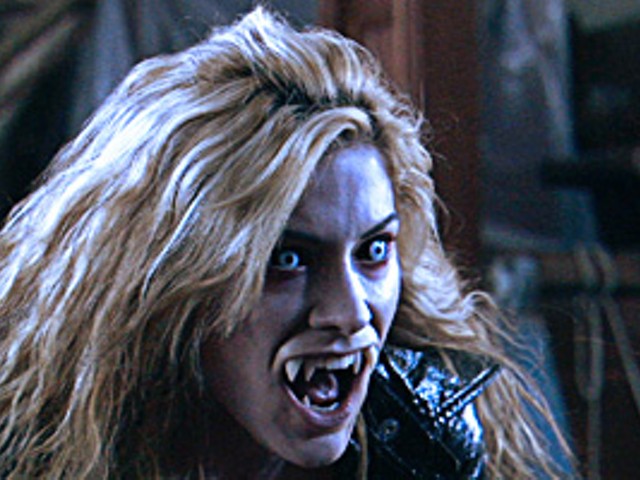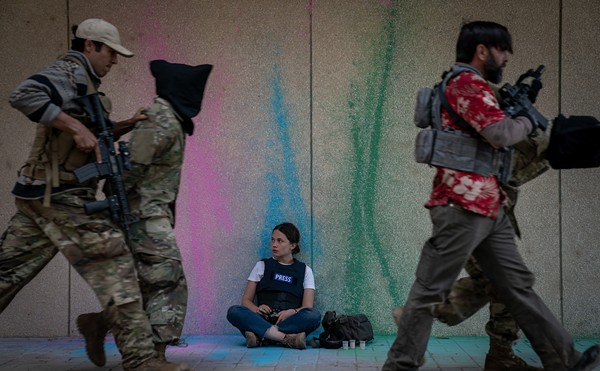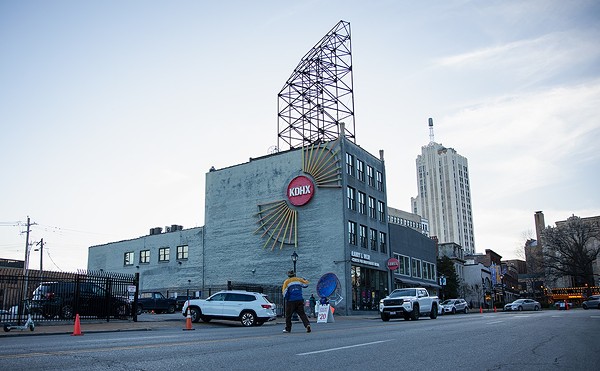"It's more than just skating; it's more than just a hobby. It's a way of life," says one person interviewed in The Rink, a documentary on roller-skating by local director Ronald "G Wiz" Butts that screens Thursday night at the St. Louis Filmmakers Showcase.
For his first feature-length film, Butts spent more than two years tracking down nearly every surviving member of the obscure subculture that developed in the roller rinks of St. Louis and East St. Louis during the disco era. Their tales of wearing skates to funerals and stealing cars to get to the rink add levity — and gravity — to a chronicle of how skating evolved from a pastime to passion among the city's black population.
Butts, better known as G Wiz, a pioneering DJ and producer in St. Louis' hip-hop scene, says he relied on testimonials partly out of necessity. It was virtually impossible to find archival footage of local skaters.
"You talking the '70s and '80s — a video camera back then was like $10,000 or something," Butts says. "It was hard just getting pictures. I went to libraries and historical societies, and nobody really had pictures or articles or anything like that in these places. One person actually asked me, 'When you get it done, can I have a copy for our archives?'
"All of that gave me more drive to do it," Butts adds. "There are stories of things that we do that is never documented."
To be clear, skating in this context isn't just cruising around in an endless circle. Rather, it is a hybrid of ice-skating, dancing and gymnastics. The skaters perform acrobatic moves with names like "crazy-legging," "criss-crossing" and "double-glide." In some cases, they line up, lock arms and weave their feet in intricate, synchronized patterns that resemble Riverdance on wheels.
"Leggin' to the beat," is how one skater describes the trick. "That's what St. Louis known for. You go to other cities, they say, 'Look how smooth they roll.'"
In a way, the dearth of old footage is a blessing; a grainy clip of a skater performing a back flip is even more eye-popping when juxtaposed with the interviews. Butts, whose only filmmaking experience is a few self-produced music videos, also uses the Ken Burns Effect (slowly zooming on faces and action in photos) to help the pacing. Still, at times the movie becomes mired in the details of who skated and where and when.
This, however, is a minor flaw. The film clocks in at a mere 58 minutes and, on the whole, the potentially dry topic is imbued with humor and significance.
One segment discusses the impact that skating had on the evolution of music in St. Louis. While the activity was initially tied to the disco era of the 1970s (the snapshots of giant Afros and goofy leisure suits are good for a few chuckles), it also contributed to the rise of hip-hop in the black community when skating-rink DJs with names like "Dr. Funk-a-Rock" started spinning high-energy old-school jams like "Planet Rock" to pump up the crowd.
"Music back then gave us so much energy," one interviewee explains.
Butts himself has manned the turntables at local rinks for the past 24 years, and he can still be heard on Monday nights at Skate King in Pine Lawn. Asked about whether he can replicate the moves in his film, he laughs. "I can do pretty much the basics there to keep me on the floor," he says. "And I know how to fall, which is one of the most important aspects of skating."





